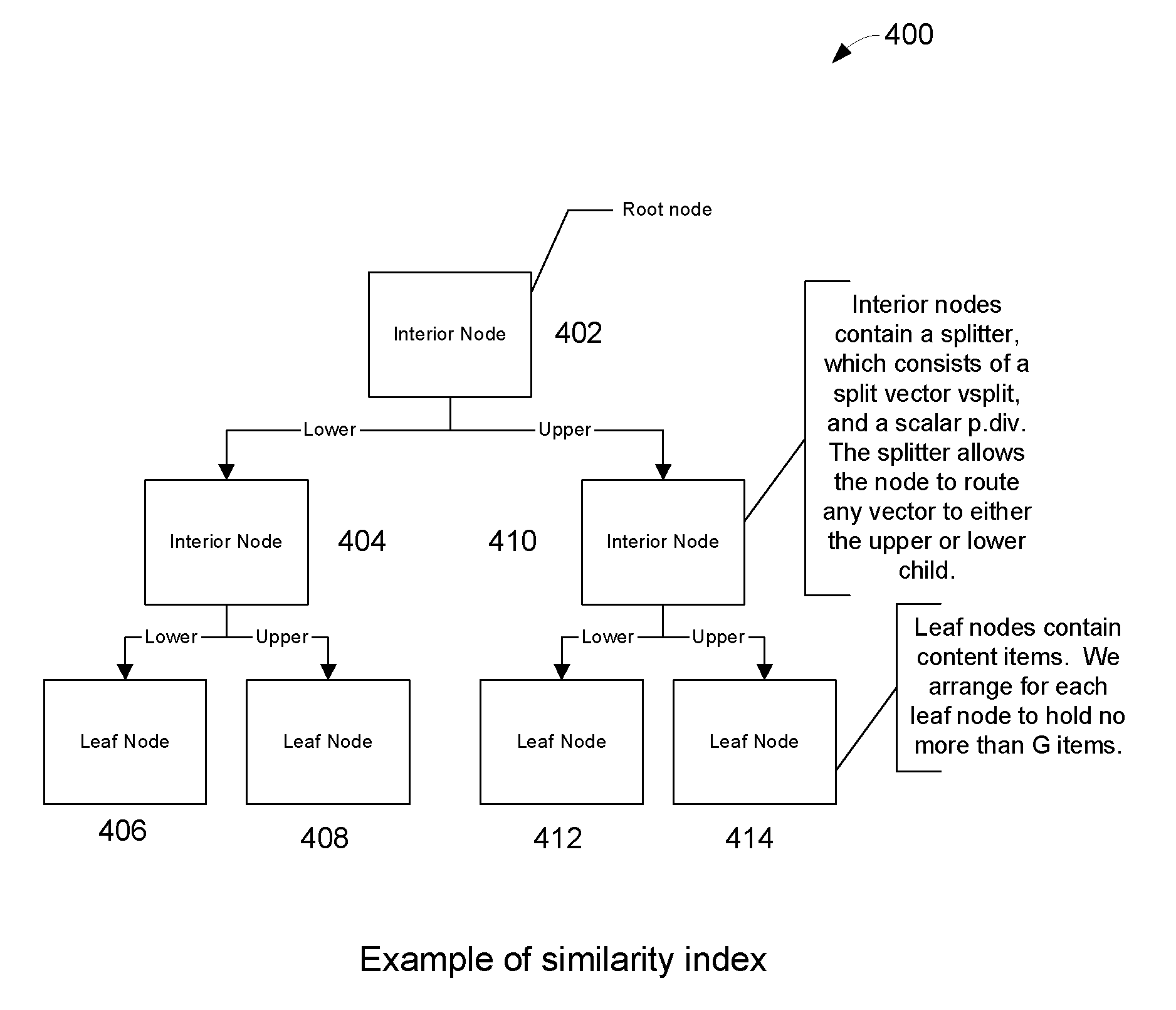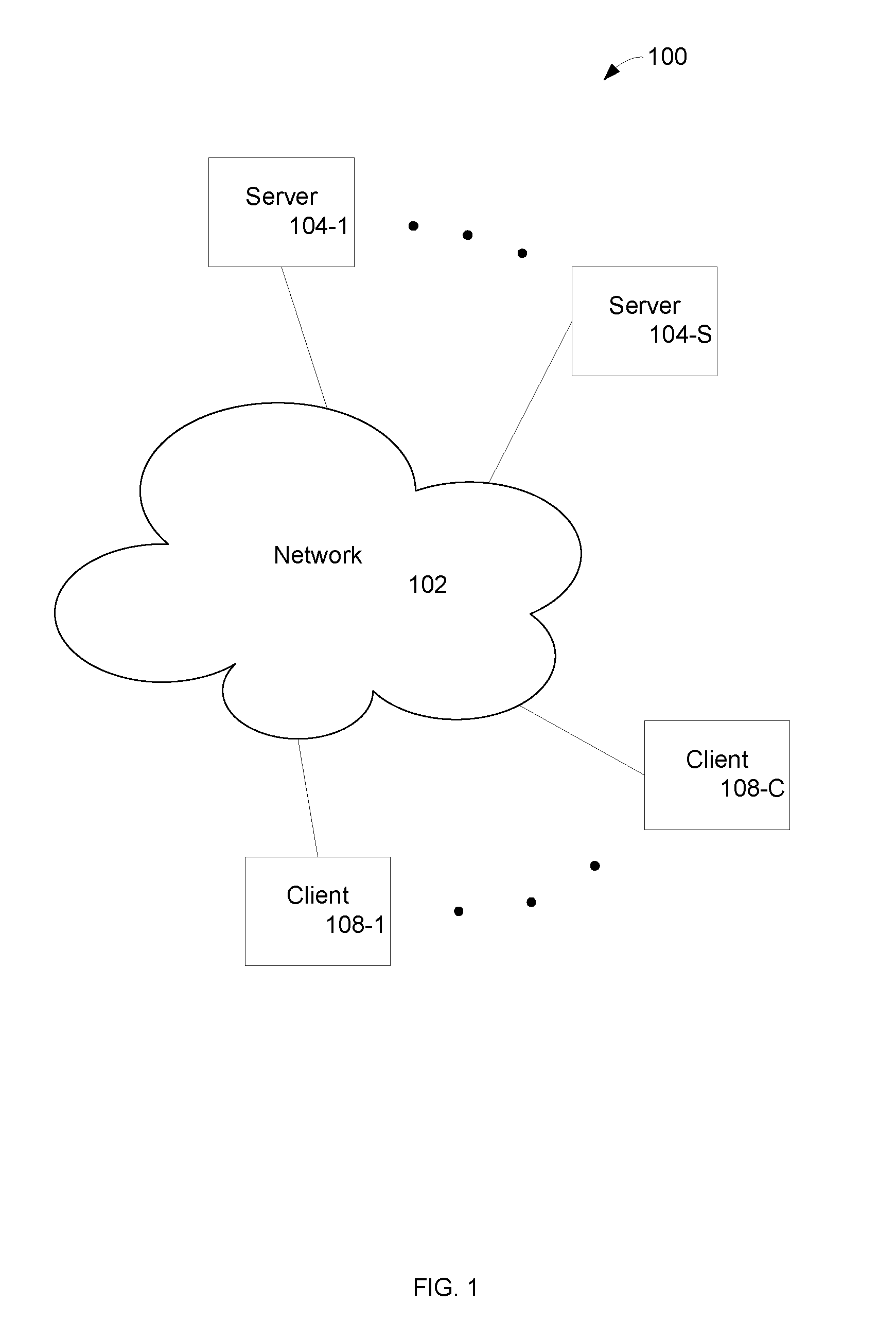Method and Apparatus for fast similarity-based query, self-join, and join for massive, high-dimension datasets
a high-dimension, similarity-based technology, applied in the field of data sets, can solve the problems of not keeping pace with the ability to make effective sense of massive datasets
- Summary
- Abstract
- Description
- Claims
- Application Information
AI Technical Summary
Benefits of technology
Problems solved by technology
Method used
Image
Examples
embodiments
[0032]We will proceed to discuss in the following order various embodiments of the present invention.
[0033]First, we show how to build a similarity index.
[0034]Second, we show how to perform a similarity-based query against the similarity index.
[0035]Third, we show a fast technique to perform a self-join. The algorithm is considered fast because the computational complexity of our approach grows as O(n*log(n)). By contrast a brute force approach considers all possible pairs within the dataset, requiring n*(n−1) / 2 similarity computations, or O(n̂2) operations.
[0036]Fourth, we show how to perform a general join on two datasets. This procedure uses the self-join technique as a sub-procedure, and it also has computational complexity of O(n1*log(n1+n2*log(n2)) operations, where n1 and n2 are the sizes of the two datasets. We note that the procedure that we will describe is better than constructing the union of the two datasets, and performing a self-join on the combined datasets. We prov...
PUM
 Login to View More
Login to View More Abstract
Description
Claims
Application Information
 Login to View More
Login to View More - R&D
- Intellectual Property
- Life Sciences
- Materials
- Tech Scout
- Unparalleled Data Quality
- Higher Quality Content
- 60% Fewer Hallucinations
Browse by: Latest US Patents, China's latest patents, Technical Efficacy Thesaurus, Application Domain, Technology Topic, Popular Technical Reports.
© 2025 PatSnap. All rights reserved.Legal|Privacy policy|Modern Slavery Act Transparency Statement|Sitemap|About US| Contact US: help@patsnap.com



